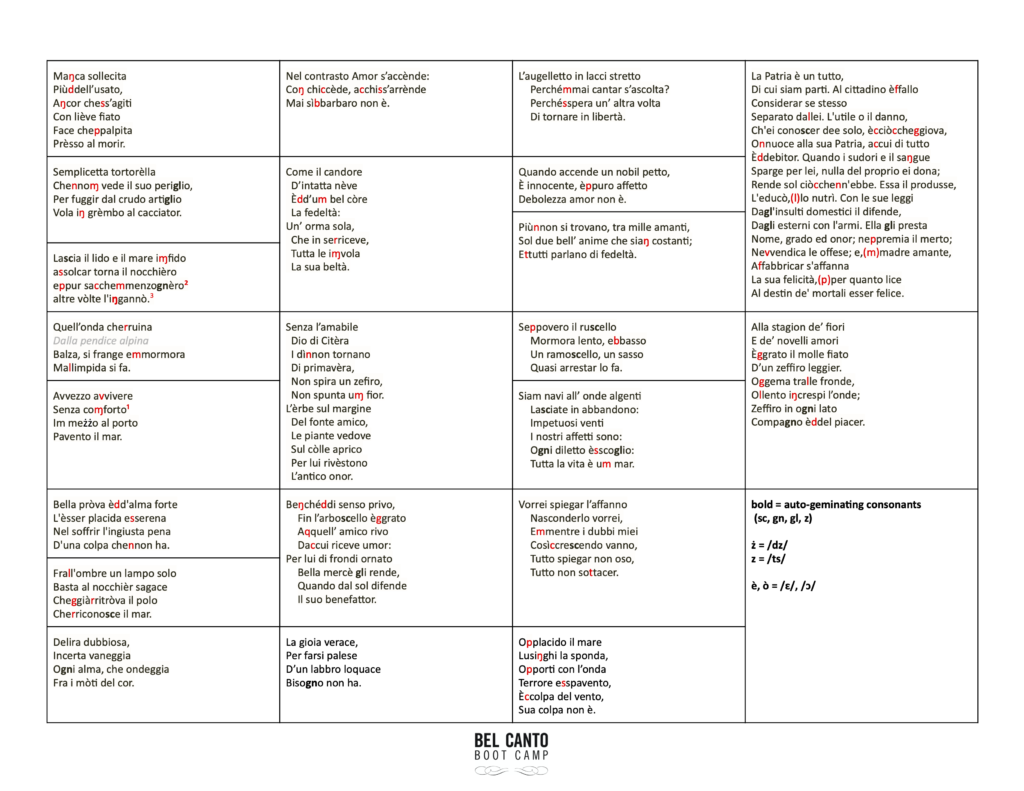Today we explore the concept of phrasal doubling or raddoppiamento fonosintattico. This phenomenon occurs in the Italian language chiefly as a homage to its Latin roots, or as the kids say nowadays, “we got the receipts.” As Latin morphed into Italian, we see both that spelling changes AND that there’s a lasting effect on pronunciation. Many of the double consonants that we see spelled out are the evolution/ assimilation of consonant clusters from Latin:
octo /kt/ → otto
saxum /ks/ → sasso
somno /mn/ → sonno
There are four consonants that auto-double –
- sc
- gn,
- gl,
- z/zz either voiced (dz) or unvoiced (ts).
These are “receipts” from Latin:
lasciare /ʃ:ʃ/ is from Latin laxare /ks/
regno /ɲ:ɲ/ <L regnum /ɲ/
figlio /ʎ:ʎ/ <L filius /l/
azione /t:ts/ <L actus /kt/
olezzo /d:dz/ <L olidus /l/
The same influence from Latin is what causes the phenomenon of phrasal doubling – where there were more consonant sounds between words in Latin, the Italians preserved this effect by doubling the initial consonant after certain words, falling into the groups of
- WORDS THAT CAUSE DOUBLING AFTER
- strong/tonic one-syllable words or one-syllable words with a written accent (examples: a, che, chi, tu, sé)
- polysyllabic words with stress on the final syllable (examples: beltà, perché, caffè, saprò, cantò, Città del Capo)
- five “piano” words (come, contra, qualche, d/ove, sopra/sovra)
- WORDS THAT CAUSE DOUBLING BEFORE
- Religious names preceded by vowel (Dio: /od:dio/, /miod:dio/; dei, dee, dea)
- Certain fixed names (Maria, etc.)
Often these phrasal doublings are spelled out, especially in the Italian we are accustomed to seeing in libretti:
- a presto → appresto, a bastanza → abbastanza
- da vero → davvero, da che → dacché
- è vero → evvero
- chi sa → chissà
- lo saprò → (saprò lo) → saprollo (future tense)
- mi mancò → (mancò mi) → mancommi (passato remoto)
Oh, and another thing…ASSIMILATION…
We see patterns of assimilation in written Italian that reflect pronunciation. For example:
- in-(not)+mobile = immobile
- Gian+Battista = Giambattista
We must learn also to recognize those patterns when they are not written out but are honored in pronunciation:
- un bacio /umbatʃo/, in petto /impɛt:to/
- invece /iɱvetʃe/, conforto /koɱfɔrto/ This sound is what we call a “chipmunk M/N” The mouth is in the position for V but it is a nasal consonant.
Attached is a phrasal doubling cheat sheet, as well as the phrasal doublings for the Vaccai lessons we have completed. Appresto.


